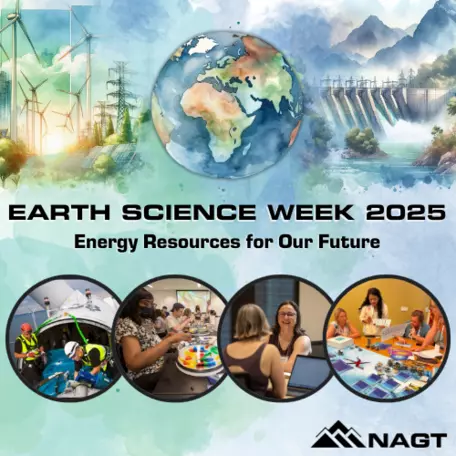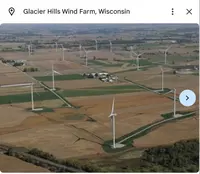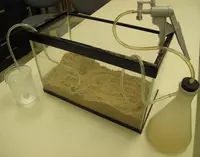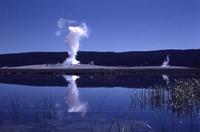Earth Science Week 2025: Energy Resources for Our Future
This page was created for AGI's 2025 Earth Science Week, October 12-18

We've selected these resources for you from our Teach the Earth collection and other projects we sponsor because they are high-quality, reviewed teaching resources that align with this year's theme: Energy Resources for Our Future.
Visit AGI's Earth Science Week website for a description of the theme and more information.
Like what you see here? Find out more about NAGT and join us today!
How do we teach about energy resources and geoscience?
Many of our energy resources come from the Earth, and those resources are unevenly distributed on Earth. The concepts of geoscience help us make predictions about where we can find and utilize energy resources and the impacts that use will have on Earth and humans. Teaching about energy use in the future is a great opportunity to incorporate data explorations, modeling, engineering activities, making predictions, and communicating results to others.
Jump down to: Featured Resources | Energy Resources in the NGSS | Additional resources for K-12 teachers from NAGT
Featured Collections
NAGT has sponsored projects that developed resources and activities for teaching about energy.
InTeGrate: Interdisciplinary Teaching about Earth for a Sustainable Future
The InTeGrate project developed hundreds of activities and collected many more, many of which focus on energy and the Earth system. Although the activities were developed primarily for the undergraduate classroom, many are appropriate for high school and middle school classroom. You can:
- Explore InTeGrate's resources for Teaching about Energy
- Read how InTeGrate materials align with the NGSS and browse by DCIs, SEPs, CCCs, and PEs
CLEAN: The Climate and Energy Educational Resource Collection
The CLEAN Collection is a high-quality and rigorously reviewed collection of climate and energy educational resources aligned with the Climate Literacy ( This site may be offline. ) and the Energy Literacy frameworks, and the Next Generation Science Standards . You can:
- Explore activites in the CLEAN collection focused on energy
- Read about CLEAN and the NGSS
Featured Resources
NAGT's Teach the Earth portal is a way to access activities submitted by individuals through workshops and on their own. These featured resources have been selected from the Teach the Earth collection for particular relevance to this year's theme.
Grades 9–12 resources
Renewable Energy Virtual Field Trip
This Google Earth slideshow allows you to explore key renewable energy sites across the world. Each stop has pictures, a brief description, and the type of renewable energy at the site. The goal of this virtual field trip is for students to become familiar with the many types of renewable energy and begin to understand the benefits and drawbacks of each.
Energy from and to the Earth
In this module, students compare the availability of geothermal resources around the world for heating and cooling and evaluate different ground exchange systems for the practical use of geothermal energy in households. A hands-on activity demonstrates ground heat exchange and its broad availability as a renewable energy source.
Should geothermal energy resources around Yellowstone Park be developed?
Students have a look at this issue with a guided tour through different sides of the story. This activity is designed with questions and web-based resources that can be used to answer the questions. At the end of the exercise, students are asked to formulate their opinion and to use the information they have gathered to strengthen their position. Of course, there is no "right" answer to this question, which is why this is a compelling topic for investigation.
Energy Resources in the NGSS
Energy resources and human activity are prominent in the performance expectations of the Next Generation Science Standards.
High school performance expectations
Earth and space science: Earth's Systems
- Develop a quantitative model to describe the cycling of carbon among the hydrosphere, atmosphere, geosphere, and biosphere. (HS-ESS2.6)
Earth and space science: Earth and Human Activity
- Construct an explanation based on evidence for how the availability of natural resources, occurrence of natural hazards, and changes in climate have influenced human activity. (HS-ESS3.1)
- Evaluate competing design solutions for developing, managing, and utilizing energy and mineral resources based on cost-benefit ratios. (HS-ESS3.2)
- Create a computational simulation to illustrate the relationships among management of natural resources, the sustainability of human populations, and biodiversity. (HS-ESS3.3)
- Evaluate or refine a technological solution that reduces impacts of human activities on natural systems. (HS-ESS3.4)
Middle school performance expectations
Earth and space science: Earth and Human Activity
- Construct a scientific explanation based on evidence for how the uneven distributions of Earth's mineral, energy, and groundwater resources are the result of past and current geoscience processes. (MS-ESS3.1)
- Apply scientific principles to design a method for monitoring and minimizing a human impact on the environment. (MS-ESS3-3)
- Construct an argument supported by evidence for how increases in human population and per-capita consumption of natural resources impact Earth's systems. (MS-ESS3-4)
Elementary performance expectations
Earth and space science: Earth and Human Activity
- Obtain and combine information to describe that energy and fuels are derived from natural resources and their uses affect the environment. (4-ESS3-1)
- Obtain and combine information about ways individual communities use science ideas to protect the Earth's resources and environment. (5-ESS3-1)
Additional resources for K-12 teachers from NAGT
Professional development
Our curated collection of K-12 professional development opportunities can help you find what you need to implement the NGSS in your classroom.
Dorothy Stout Professional Development Grants: Dottie Stout was the first female president of NAGT and was active as a strong supporter of earth science education at all levels. In honor of Dottie's outstanding work and lifelong dedication to Earth Science Education, NAGT awards grants to faculty and students at 2 year colleges and K-12 teachers in support of the following:
- Participation in Earth science classes or workshops
- Attendance at professional scientific or science education meetings
- Participation in Earth science field trips
- Purchase of Earth science materials for classroom use
Grants of $750 are made annually in three categories: Community College Faculty, Community College Student, and K-12 Educator. For more information about the award visit the Stout Grants page.
Awards
The Outstanding Earth Science Teacher (OEST) awards are given for "exceptional contributions to the stimulation of interest in the Earth Sciences at the pre-college level." Any teacher or other K-12 educator who covers a significant amount of earth science content with their students is eligible. For more information about the award and to submit a nomination visit the OEST Awards page.


![[creative commons]](/images/creativecommons_16.png)


![[reuse info]](/images/information_16.png)